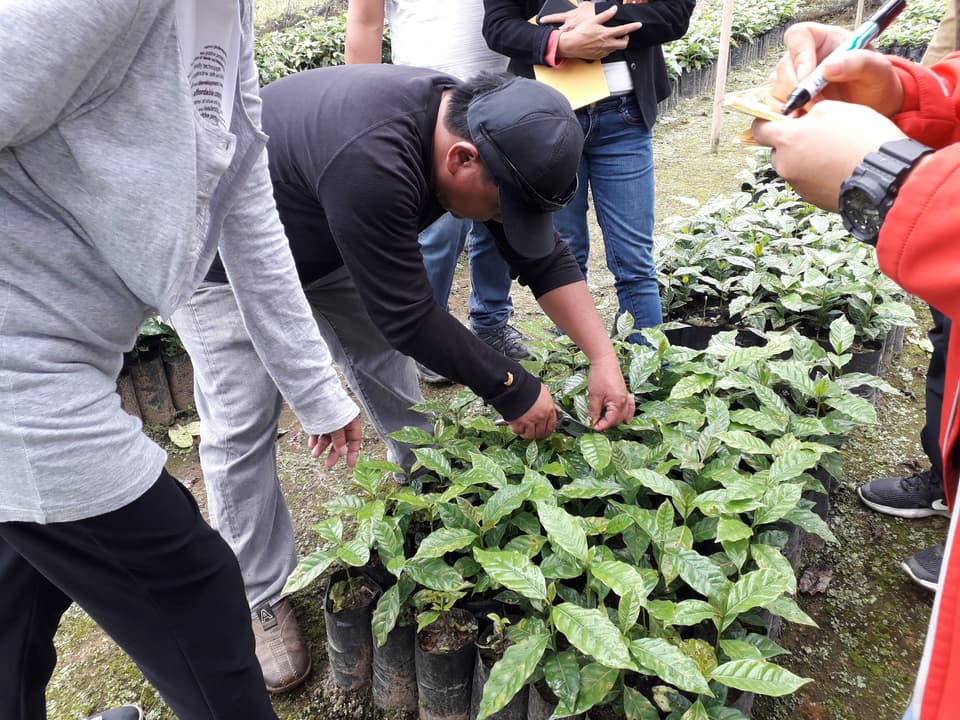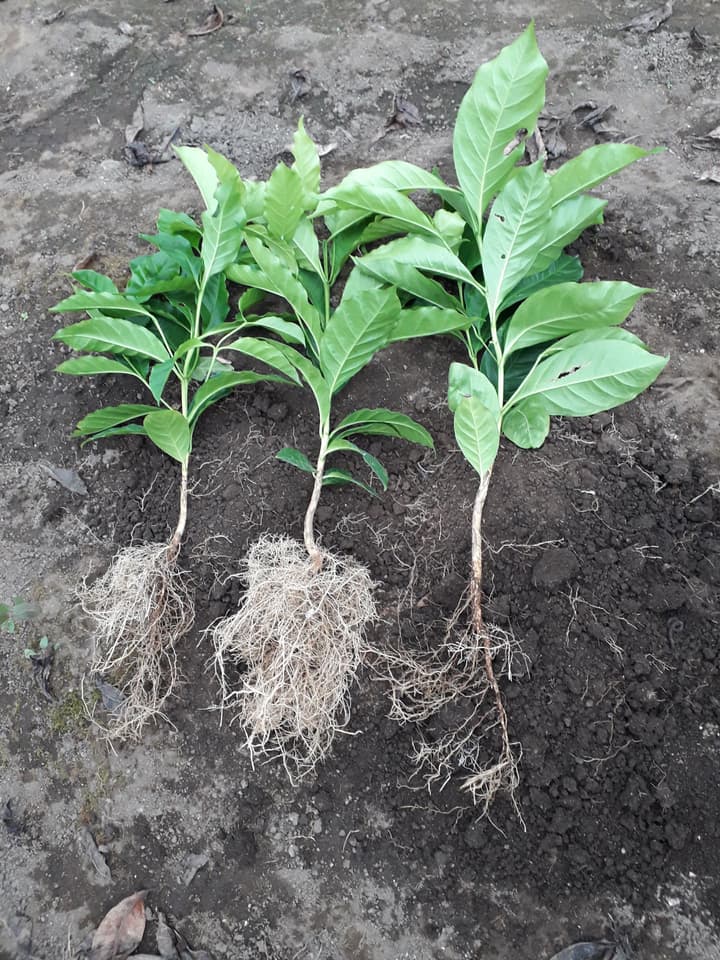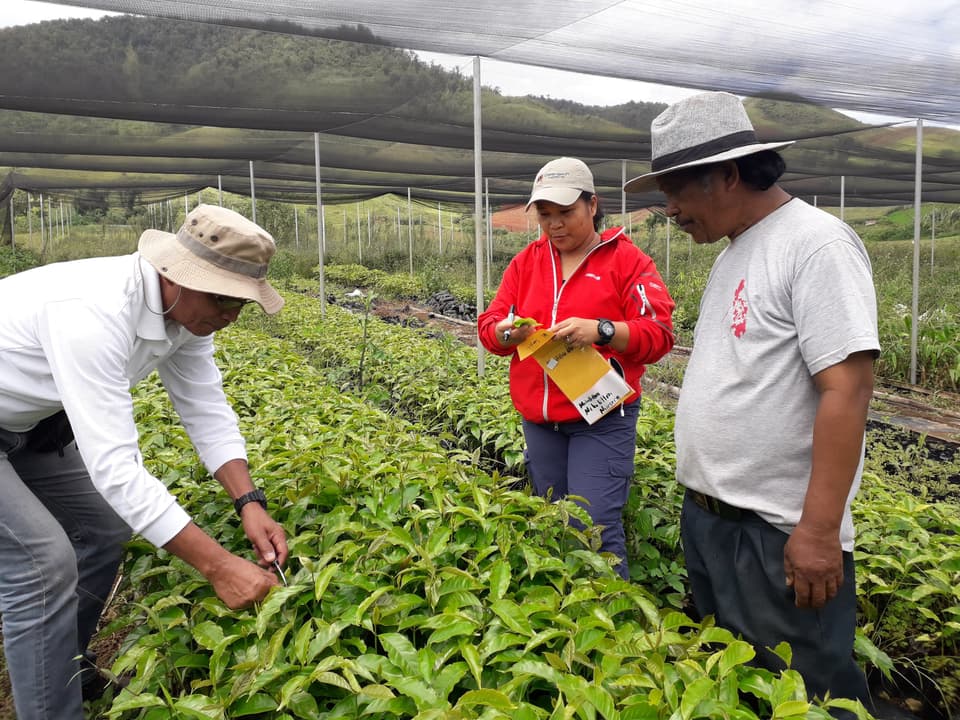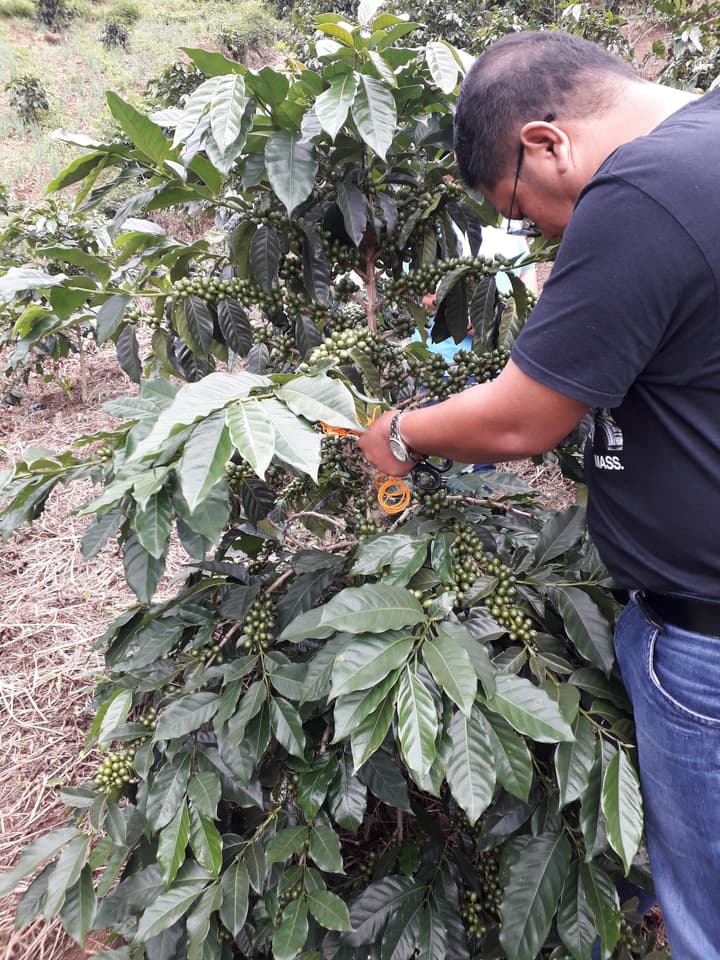It starts with a seed—but what seed is it?
Seed lots surveys in 2019 showed fewer than 10% of plants tested were true-to-type
Unlike many agricultural commodities, coffee does not have an organized seed sector capable of reliably producing genetically pure, healthy seedlings for farmers to plant. This means that coffee farmers looking to plant new trees typically procure seeds from local nurseries, often following few or no quality control measures, or they obtain seeds by saving them from their own fields or getting them from friends or neighbors.
While these practices lead to easy sources of coffee seeds to plant, they carry significant risks for farmers and can greatly lower the potential profitability of their farms. If a farmer obtains a plant that is not well suited to his or her conditions, or one that is of poor quality or misidentified, the lower potential and increased risk of that plant will remain in a farmer’s field for, potentially, decades. This dynamic is a significant one, contributing to farmers remaining on the treadmill of poverty.

WCR's Nursery Development Program is helping to contribute to a professionalized coffee seed sector benefiting smallholder farmers.
WCR’s Nursery Development Program aims to contribute to a professionalized coffee seed sector that is inclusive of smallholder coffee farmers. The program builds the capacity of seed gardens and both large and small nurseries to produce genetically pure, healthy seedlings for farmers. Staff at participating nurseries are trained using a WCR-developed manual of best practices for producing these desired seedlings, and also on strong business practices. This knowledge is then passed down, as nursery staff are trained as trainers.
WCR undertook crucial work in 2019 to advance this program. Before nursery training programs begin, program workers typically conduct a baseline assessment of the seed and nursery production systems in a location. In 2019, WCR conducted seed sector analyses in countries with particularly difficult and disorganized seed production systems, including Mexico and the Philippines.
In the Philippines, there are only a small number of officially approved and available varieties. The way in which seeds are certified and produced has led to a lot of mixing, rather than pure varieties. The 2019 analyses there, which took place mainly in Mindinao and Luzon, found that farmers in the south are using illegally introduced Catimors, while in the north they are still planting relatives of Bourbon. There is little use of improved varieties designed to be tolerant of disease and high in yield.

The Nursery Development Program helps nurseries produce genetically pure, healthy seedlings for farmers.
In Mexico, there is high interest in the southern part of the country about varieties that can tolerate coffee leaf rust. This is the region where WCR’s focus and 2019 analyses took place—in partnership with Sustainable Harvest—with cooperatives from different communities in Tuxtla, Chiapas. Most of the analyzed samples were a mixture of Catimors, Sarchimors, and other rust-resistant varieties. The analyses also found that the proximity of seed plots to older Bourbon plantations has led to mixing.
All the seed lots surveyed in 2019 showed that less than 10% of the varieties found were true-to-type, meaning that DNA tests confirmed the varieties were either the incorrect variety all together (e.g., they were actually a different variety), or that the variety lacked genetic conformity for other reasons, such as cross-pollination. A lack of conformity means the plants would not be expected to perform according to the standard for that variety—for example, it could lead to supposedly disease-resistant varieties failing. This is particularly alarming because seed gardens provide the “mother” supply of seeds grown into seedlings and sold in nurseries; significant problems in seed lots flow down to affect an entire region.

WCR's 2019 seed sector analysis in the Philippines found heavy use of Catimor and Bourbon trees, and little use of improved varieties.
The findings from the 2019 seed lot analyses match what Nursery Development Program Manager Emilia Umaña has observed in her experience with farmers. Emilia’s team frequently tests plants grown from saved seed to see if they are of the variety the farmer thinks they are—or in cases where the farmer has no idea what the variety is, the test aims to discover the genetics behind these plants. “Most of the time, the results come back as the plants not matching the reference of the variety,” Emilia says. “Sometimes it’s completely different, and sometimes it matches to a certain extent but not enough to be considered pure.”
The Nursery Development program, then, provides a valuable service in increasing the capacity of nurseries to deliver genetically pure, healthy seedlings to farmers in a region.
So far in 2020, the program has sampled seed sources in additional countries—El Salvador, Guatemala, Honduras, Nicaragua, Peru, and Puerto Rico—allowing WCR to build data on the “mixes” of varieties planted in different regions, and to discover which seed plantations have true-to-type genetics. Adds Emilia, “We are also working on helping countries (such as Puerto Rico) establish pure seed plantations of different varieties to provide a reliable seed source, and we are training nursery operators directly to enhance their practices to protect traceability of quality seed and turn it into pure and healthy seedlings that will go into growers' hands.”

In 2020, WCR is helping countries establish pure seed plantations of different varieties to provide a reliable seed source.